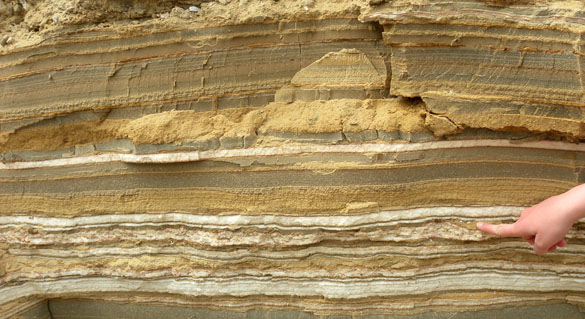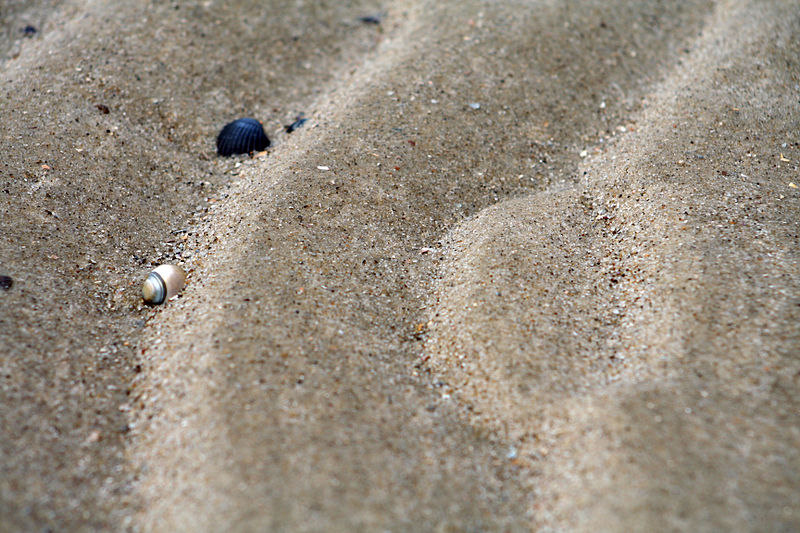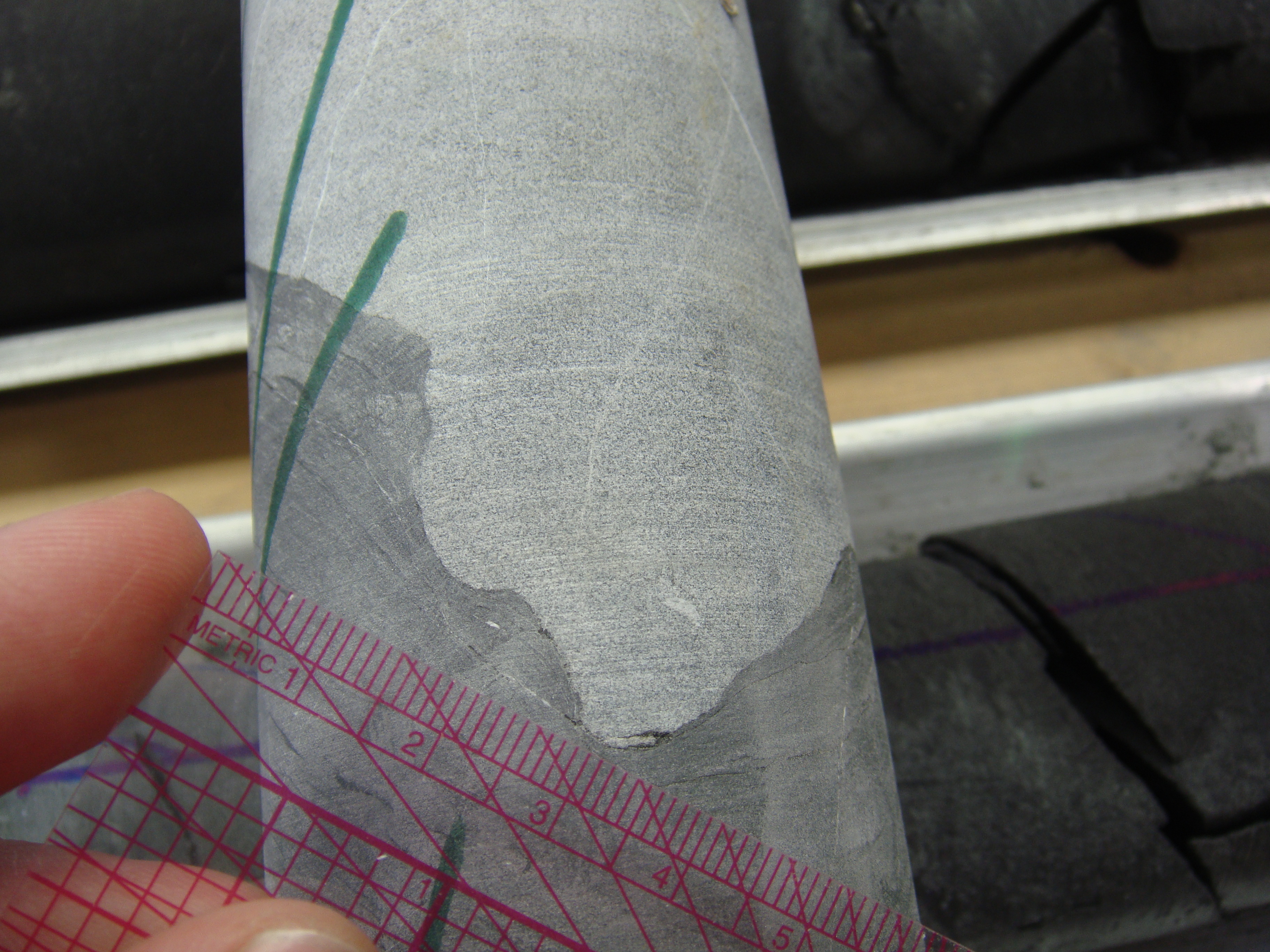Sedimentary structures are common within sedimentary rocks. They take many forms.
To log this cache find the two structure that are present within the rock face at the this location. Email me with the name of the two sedimentary structures present and estimate the size of these structures and the apparent dip of the beds (0-90 degrees). As with all Earthcache Log straight after the Email. I will only contact you if its incorrect. Do not place the answers in a log
Different sedimentary structures
Laminations
These are formed in two environments. The first is very high energy flows. These are very rare. The second is low energy environments where material settles out under gravity. They are indicative of very low energy.

Note the ridge crest about which the ripples are symmetrical
>
Ripple Marks
There are two key types of ripple marks. Symmetrical ripple marks are formed by currents that flow in both direction in rapid succession. Prime examples of this are waves or tidal currents. They are symmetrical when viewed along the ridge axis

Note the ridge crest about which the ripples are symmetrical
The Second type of ripple marks are asymmetrical ripple marks. These are formed when sediment is moved along the base of the current flow. They have a steep side and a shallow side. These can be used to work out the direction of the current movement. The shallow side points up stream while the steep side points downstream.

Modern example. As with all ripple marks these are best seen on the surface of the bed
Crossbedding
Crossbedding is seen looking sideways through an asymmetrical ripple mark. What is seen is a series of lamination which run at an angle to the bedding, hence crossbedding. The direction that the beds dip in relation to the bedding can show the current direction when they form. These features can form on a wide variety of scales, from 1-5mm in a single thin bed to 10s of meters in a large sand dune.

Note the bedding (horizontal) and the crossbeds dipping to the right
Load and Cast
These are formed when sediment is deposited on top of still wet sediment. The upper sediment will settle down and exert a downward force. The underlying sediment forces its way up producing flame casts, while the overlying sediment slumps downwards forming cast structures.

Note the flame structure at the top
Dessication cracks
These are rarely preserved in sediment. They are formed as the sediment dries out and shrinks creating cracks. They appear as polagonal shapes bordered by a crack.

Modern example of dessication cracks
Sole Marks
These are formed when a current flowing over sediment drags an object over the sediment by saltation (bouncing). It gouges holes in the sediment which are then filled in by the next load of sediment.

Note the sole mark one the bedding.
Imbrication
Imbrication is formed when a current aligns non-spherical pebbles about the long axis. This is commonly seen in conglomerates with the larger pebble size. It is not seen in pure sandstones.

The red lines show the imbrication
Graded Bedding
Graded bedding is formed when the energy level of a flow drops over time. Therefore the larger grains are deposited first followed over time by a gradual decrease in size of the grains. Sometimes the grading can be reversed, but this is relatively rare.

Note the coarser base layer.
Sedimentary Structures are common through out sedimentary rocks. Have Fun.
The rock in which these structures are formed is Hamstone. This is a jurassic limestone with a very high sand level. It is coarse to medium grained. It contains broken up shell and calcite crystals. The colour of the rock is produced by Goethite an iron hydroxide. For more infomation see Hamstone lower
Hamstone middle